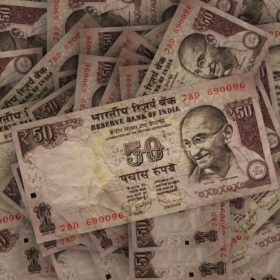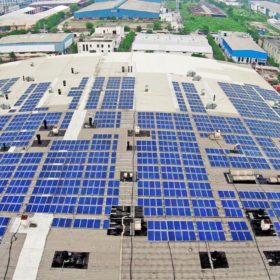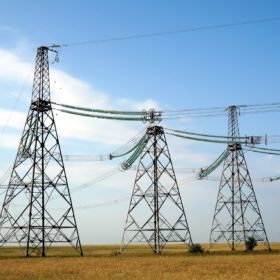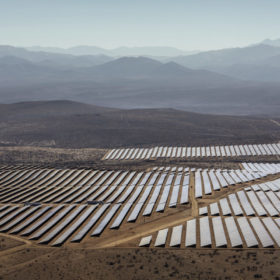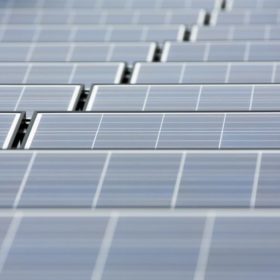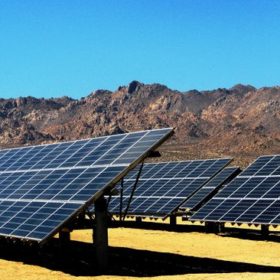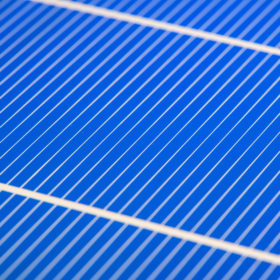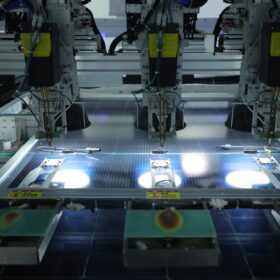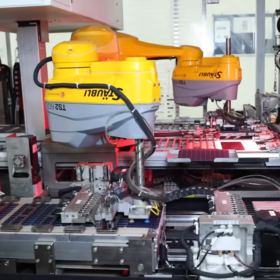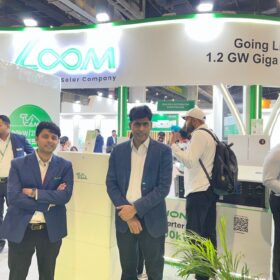SECI defers ‘world’s biggest’ solar auction until mid November
The bid submission deadline for the national 10 GW, inter-state PV project plus manufacturing tender is now November 12. According to officials, there are amendments to be made in the tender requirements, for which it is awaiting a ministerial mandate.
Fall in rupee against the dollar will see solar targets missed, predict analysts
Ratings agency adds to pessimistic predictions about Indian solar with MNRE ambition of 34 GW of solar auctions next year at real risk. The news follows similar warnings about India’s 100 GW solar target.
Uttar Pradesh auctions 500 MW of solar capacity at tariffs above Rs3
The lowest solar tariff, of Rs3.17 per unit, was quoted by the NTPC utility and Maheshwari Mining and Energy, for 140 MW and 20 MW of grid connected PV capacity, respectively.
Indian EPC eyes central Asian markets
Sterling and Wilson wants to construct 200 MW of PV in Kazakhstan in the next two years and says it is eager to get a slice of the Uzbek market too.
IEA low-balls solar growth (again)
The agency’s base case expects relatively flat growth in solar deployment over the next six years, but for solar to still dominate growth among renewable technologies. The agency’s estimates are again below those of major market analysts.
Module prices have decreased by up to 25% so far this year, TrendForce says
According to the Gold Member Solar Report by EnergyTrend (Q3 2018), monocrystalline module prices have fallen almost 20% this year, while those for polycrystalline modules have dropped by more than 25%. Increased consolidation among manufacturers and developers is expected to occur in China and the global solar market, with more merger deals, plans for capacity reductions and even factory closures.
IPCC: 1.5°C limit needs rapid and far-reaching action but enables SDG progress
The Intergovernmental Panel on Climate Change (IPCC) has released a new report on different ways global warming can be kept within the 1.5°C limit. The panel seeks to inform policymakers before the upcoming COP24 in Poland this December. Resulting from their analysis, the 91 authors state that drastic action and significant investments are needed. Such climate action across all sectors would have significant positive effects on sustainable development progress, they say.
TOPCon: The next big thing after PERC
TOPCon technologies could further increase solar cell efficiencies, said Guangyao Jin, chief scientist, DuPont Photovoltaic Solutions, at this year’s Energy Taiwan, held in September. He added that metallization paste is crucial.
Gujarat will soon tender 250 MW solar+storage capacity
Saurabhbhai Patel, Minister of Energy, Government of Gujarat, has announced that the state will soon issue a 250 MW grid-connected solar tender linked with storage. He also said that Gujarat will add more than 5 GW of new PV capacity in the next three years.
Uttar Pradesh will tender another 500 MW solar capacity by end of October
The recent 500 MW grid-connected solar capacity tendered by the Uttar Pradesh New and Renewable Energy Development Agency (UPNEDA) was oversubscribed by 250 MW. A reverse auction will now be held on October 9. The capacity is part of the previous 1 GW tendered capacity, which was oversubscribed by around 800 MW, but cancelled due to high tariffs

